
Apollo 13 oxygen tank explodes on April 13, 1970
Apollo 13 oxygen tank explodes: On April 13, 1970, disaster strikes 200,000 miles from Earth when oxygen tank No. 2 blows up on Apollo 13, the third manned lunar landing mission. Astronauts James A. Lovell, John L. Swigert, and Fred W. Haise had left Earth two days before for the Fra Mauro highlands of the moon but were forced to turn their attention to simply making it home alive.
Mission commander Lovell reported to mission control on Earth: “Houston, we’ve had a problem here”, and it was discovered that the normal supply of oxygen, electricity, light, and water had been disrupted. The landing mission was aborted, and the astronauts and controllers on Earth scrambled to come up with emergency procedures. The crippled spacecraft continued to the moon, circled it, and began a long, cold journey back to Earth.
The astronauts and mission control were faced with enormous logistical problems in stabilizing the spacecraft and its air supply, and providing enough energy to the damaged fuel cells to allow successful reentry into Earth’s atmosphere. Navigation was another problem, and Apollo 13‘s course was repeatedly corrected with dramatic and untested maneuvers. On April 17, with the world anxiously watching, tragedy turned to triumph as the Apollo 13 astronauts touched down safely in the Pacific Ocean.
History Channel / Wikipedia / Britannica Encyclopedia /
NASA.gov (The Apollo 13 Accident) /
Space.com 
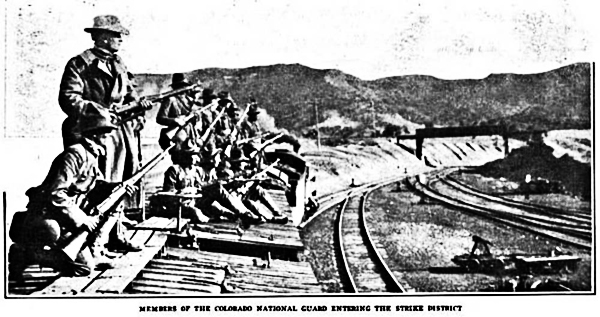
Militia slaughters strikers at Ludlow, Colorado on April 20, 1914
Militia slaughters strikers at Ludlow, Colorado: Ending a bitter coal-miners’ strike, Colorado militiamen attack a tent colony of strikers, killing dozens of men, women, and children.
The conflict had begun the previous September. About 11,000 miners in southern Colorado went on strike against the powerful Colorado Fuel & Iron Corporation (CF&I) to protest low pay, dangerous working conditions, and the company’s autocratic dominance over the workers’ lives. The CF&I, which was owned by the Rockefeller family and Standard Oil, responded to the strike by immediately evicting the miners and their families from company-owned shacks. With help from the United Mine Workers, the miners moved with their families to canvas tent colonies scattered around the nearby hills and continued to strike.
When the evictions failed to end the strike, the Rockefeller interests hired private detectives that attacked the tent colonies with rifles and Gatling guns. The miners fought back, and several were killed. When the tenacity of the strikers became apparent, the Rockefellers approached the governor of Colorado, who authorized the use of the National Guard. The Rockefellers agreed to pay their wages.
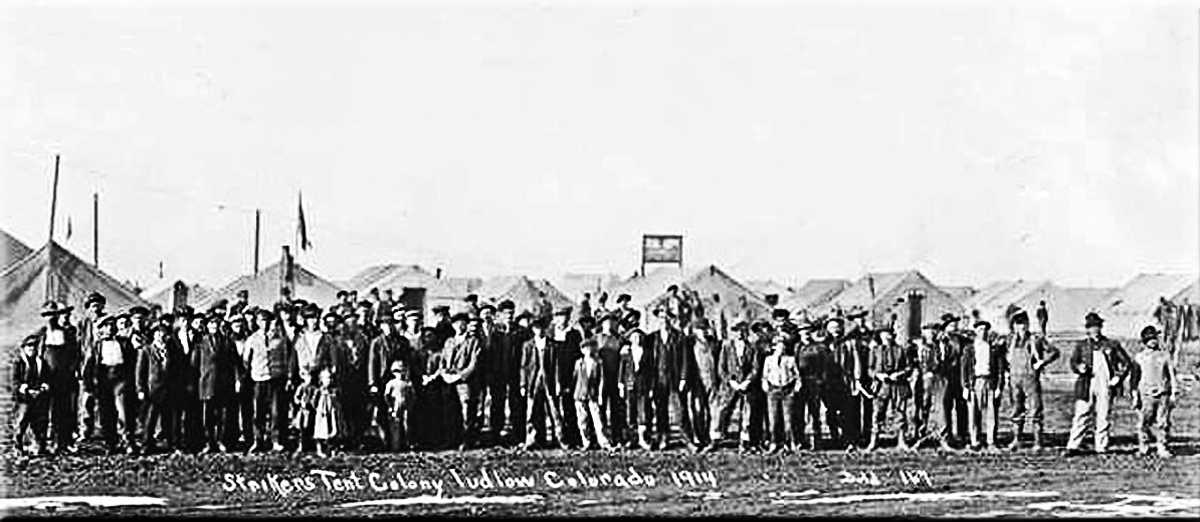
At first, the strikers believed that the government had sent the National Guard to protect them. They soon discovered, though, that the militia was under orders to break the strike. On this day in 1914, two companies of guardsmen attacked the largest tent colony of strikers near the town of Ludlow, home to about 1,000 men, women, and children. The attack began in the morning with a barrage of bullets fired into the tents. The miners shot back with pistols and rifles.
After a strike leader was killed while attempting to negotiate a truce, the strikers feared the attack would intensify. To stay safe from gunfire, women and children took cover in pits dug beneath the tents. At dusk, guardsmen moved down from the hills and set the tent colony on fire with torches, shooting at the families as they fled into the hills. The true carnage, however, was not discovered until the next day, when a telephone linesman discovered a pit under one of the tents filled with the burned remains of 11 children and 2 women.
Although the “Ludlow Massacre” outraged many Americans, the tragedy did little to help the beleaguered Colorado miners and their families. Additional federal troops crushed the coal-miners’ strike, and the miners failed to achieve recognition of their union or any significant improvement in their wages and working conditions. Sixty-six men, women, and children died during the strike, but not a single militiaman or private detective was charged with any crime.
History Channel / Wikipedia / Britannica Encyclopedia /
University of Denver / Colorado Public Radio / New Yorker / Zinned Project.org
Ludlow Massacre (YouTube) 
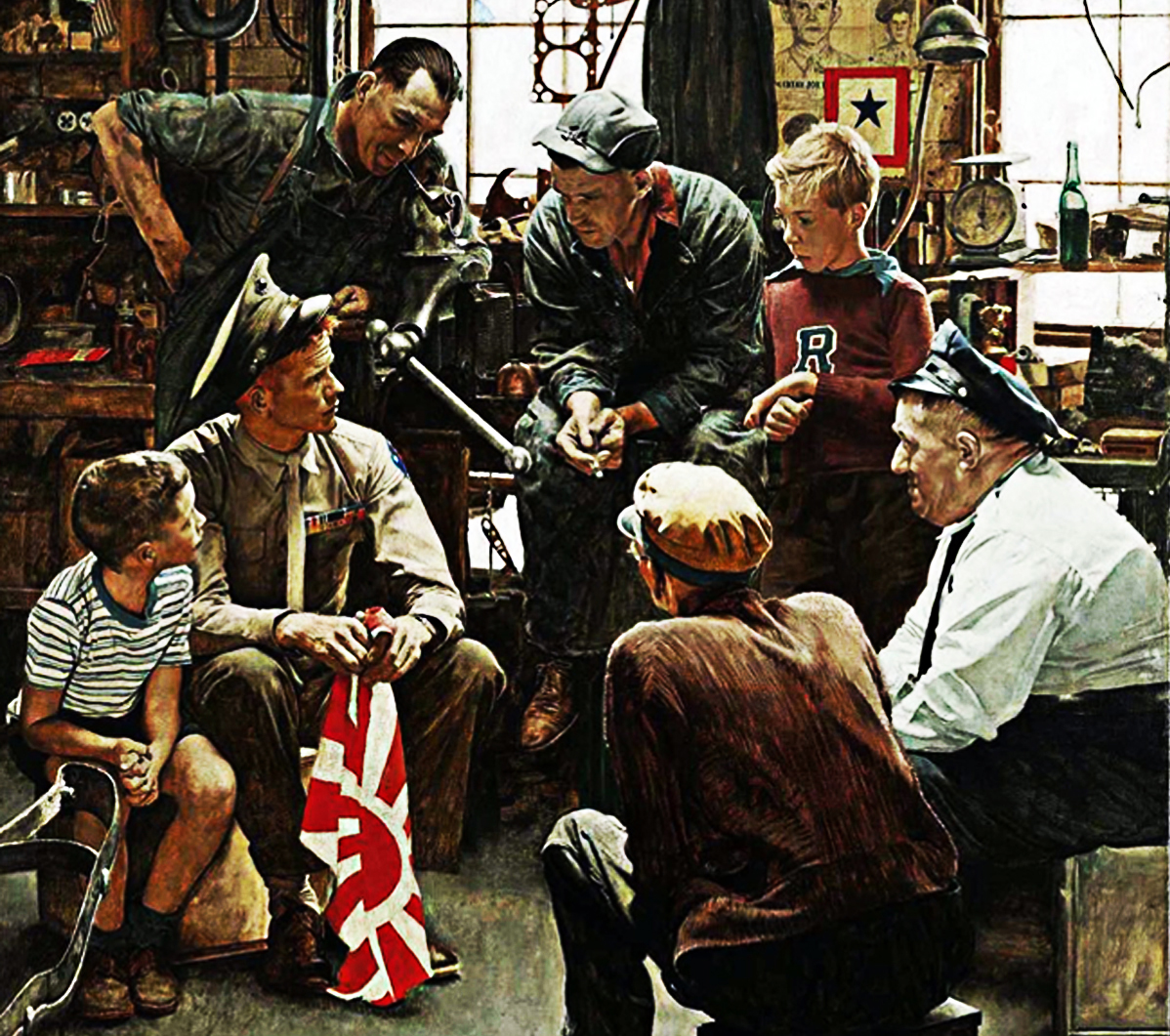
Understanding Military Terminology
Recovery
(DOD)
1. In air (aviation) operations, that phase of a mission that involves the return of an aircraft to a land base or platform afloat.Joint Publications (JP 3-52) Joint Airspace Control - Intelligence Resource Program
2. The retrieval of a mine from the location where emplaced.Joint Publications (JP 3-15) Barriers, Obstacles, and Mine Warfare for Joint Operations
3. In personnel recovery, actions taken to physically gain custody of isolated personnel and return them to friendly control.Joint Publications (JP 3-50) Personnel Recovery - Intelligence Resource Program
4. Actions taken to extricate damaged or disabled equipment for return to friendly control or repair at another locationJoint Publications (JP 3-34) Joint Engineer Operations - Intelligence Resource Program
See also Evader; Evasion.
Joint Publications (JP 3-34) Joint Engineer Operations - Intelligence Resource Program
Recovery and Reconstitution
(DOD)
1. Those actions taken by one nation prior to, during, and following an attack by an enemy nation to minimize the effects of the attack, rehabilitate the national economy, provide for the welfare of the populace, and maximize the combat potential of remaining forces and supporting activities.
2. Those actions taken by a military force during or after operational employment to restore its combat capability to full operational readiness.
See also Recovery.
Joint Publications (JP 3-35) Deployment and Redeployment Operations
Recovery Mechanism
(DOD) An indigenous or surrogate infrastructure that is specifically developed, trained, and directed by United States forces to contact, authenticate, support,
Also called RM.
Joint Publications (JP 3-50) Intelligence Resource Program
Recovery Operations
(DOD) Operations conducted to search for, locate, identify, recover, and return isolated personnel, human remains, sensitive equipment, or items critical to national security.
Joint Publications (JP 3-50) Intelligence Resource Program
Recovery Site
(DOD) In personnel recovery, an area from which isolated personnel can be recovered.
See also Escapee; Evader; Evasion.
Joint Publications (JP 3-50) Intelligence Resource Program
Recovery Team
(DOD) In personnel recovery, designated United States or United States-directed forces, that are specifically trained to operate in conjunction with indigenous or surrogate forces, and are tasked to contact, authenticate, support, move, and exfiltrate isolated personnel.
Also called RT.
Joint Publications (JP 3-50) Intelligence Resource Program
Recovery Vehicle
(DOD) In personnel recovery, the vehicle on which isolated personnel are boarded and transported from the recovery site.
Joint Publications (JP 3-50) Intelligence Resource Program
Joint Publication - Department of Defense Dictionary of Military and Associated Terms
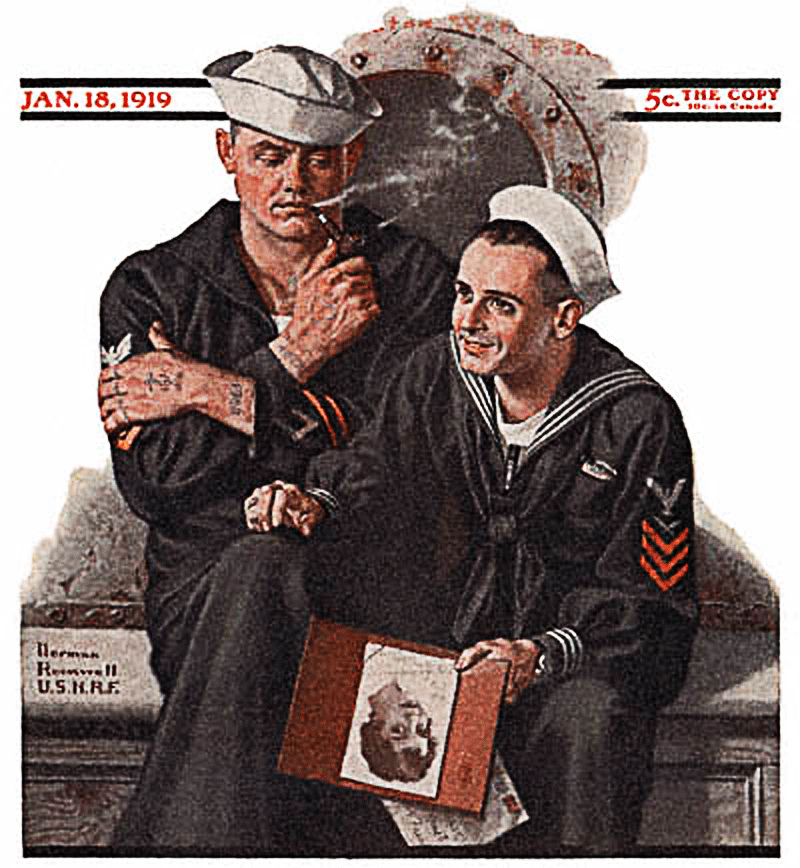
The Old Salt’s Corner

“A Toast to a Veteran”
Crystal is the goblet, clear, like the vision of our mission.
Red is the wine, dark, to remind us of those who have gone before us.
Strong is the hand that holds it, yet tender, when the time is nigh.
Tall is the Warrior, whatever stature they may be.
We stand together brothers, comrades, and mates.
We pause to respect the departed, and reflect, on the life we choose to follow.
We lift these glasses high in honor, tribute and glory to all who may be called.
~ American Armed Forces Veteran

“I’m Just Sayin”
“I firmly believe that a story is only as good as the villain.”
“All I've ever wanted to do is darken the day and brighten the night.”
“Superman is, after all, an alien life form.
He's simply the acceptable face of invading realities.”
“Be regular and orderly in your life,
that you may be violent and original in your work.”
~ Clive Barker

“Thought for the Day”
“I meant what I said and I said what I meant.”
“The first wealth is health.”
“Fun is good.”
“Only you can control your future.”
“You're in pretty good shape for the shape you are in.”
“Adults are obsolete children.”
“Don't cry because it's over
Smile because it happened.”
“Today you are you!
That is truer than true!
There is no one alive who is you-er than you!”
“Today was good.
Today was fun.
Tomorrow is another one.”
“The more that you read,
the more things you will know.
The more that you learn,
the more places you'll go.”
~ Dr. Seuss (Theodor Seuss Geisel)

“What I Learned”
“Early to bed and early to rise makes a man healthy, wealthy and wise.”
“An investment in knowledge pays the best interest.”
“Well done is better than well said.”
“You may delay, but time will not.”
“By failing to prepare, you are preparing to fail.”
“You may delay, but time will not.”
“Never leave that till tomorrow which you can do today.”
“Lost time is never found again.”
“Half a truth is often a great lie.”
“Never confuse motion with action.”
“He that is good for making excuses is seldom good for anything else.”
“Either write something worth reading or do something worth writing.”
“Guests, like fish,
begin to smell after three days.”
“Three can keep a secret,
if two of them are dead.”
“Tell me and I forget.
Teach me and I remember.
Involve me and I learn.”
“Beware of little expenses.
A small leak will sink a great ship.”
“A place for everything,
everything in its place.”
“Wise men don't need advice.
Fools won't take it.”
“I didn't fail the test,
FI just found 100 ways to do it wrong.”
~ Benjamin Franklin

Mr. Answer Man Please Tell Us: Why Don't Vultures Eat Live Prey?
As an animal that is synonymous with death and disease, the vulture understandably has a poor reputation in many cultures across the globe, despite, ironically enough, being a huge boon to humans in terms of being able to reduce instances of death and disease.
While it’s important to note that many animals eat carrion, vultures are fairly unique in that they’re able to eat carrion that has succumbed to the effects of decay and disease, a feat few stomachs in the animal kingdom can match.
As an idea of just how ridiculously hardy vultures are, experiments have shown that they are all but immune to botulism and that they can happily chow down on the flesh of an animal coated in Bacillus anthracis which is better known as the bacteria that causes anthrax! They also have no problem eating an animal infected with rabies, hog cholera and numerous other diseases that would ultimately be lethal to most other scavengers.
So how do they do it? Vultures are able to comfortably eat diseased carrion thanks in large part to their highly acidic gastric juices which are sufficiently strong enough to kill most bacteria before they ever become an issue.
In the extreme a turkey vulture’s stomach acid could technically be almost 1000 times more acidic than yours at a given instance. In fact, it’s so acidic that it can dissolve many metals. For further reference, battery acid has a pH of about 0.8.
Even when bacteria does survive the gauntlet that is the turkey vulture’s stomach, it then has to compete with its amazing vulture immune system. In regards to the latter, vultures are noted as having one of the “strongest immune systems of all vertebrates” and there are few food-borne diseases that truly pose a threat to it.

At first, the strikers believed that the government had sent the National Guard to protect them. They soon discovered, though, that the militia was under orders to break the strike. On this day in 1914, two companies of guardsmen attacked the largest tent colony of strikers near the town of Ludlow, home to about 1,000 men, women, and children. The attack began in the morning with a barrage of bullets fired into the tents. The miners shot back with pistols and rifles.
There is a point at which even a vulture will say no and flesh will be deemed too putrid or foul to eat. However, this doesn’t necessarily stop the vulture from eventually eating some of the remains. For example, the bearded vulture can live on a diet of 70%-90% bone. In fact, according to studies conducted on bearded vultures, this diet is actually more efficient than a diet of fresh meat because bones have a higher caloric content and the bones will last indefinitely, unlike flesh. So long after the flesh has gone, the remaining bones are still fair game for the bearded vulture.
Vultures notably urinate and defecate all over themselves while they eat which, thanks to the highly acidic nature of their bodily waste, kills any bacteria that makes its way onto the vulture’s legs. This also has the side effect of sterilising the area around the carcass, also stopping disease from spreading.
To illustrate what can happen without the vultures in some areas, in India, a massive decline in vulture populations led to an explosion in the population of feral dogs and rats with whom the vultures formerly competed for carcasses. These animals, unlike the “dead-end” vultures, are vectors for numerous diseases including rabies.
The remains of the carcasses that were formerly picked clean by the vultures are also now contaminating water supplies causing further disease issues.
It may surprise you to learn the bulky vulture is actually one of the highest flying animals on Earth, with some varieties capable of flying at elevations as high as 40,000 feet! For reference, Mount Everest is about 29,029 feet in elevation.
Audubon.org
• Hawk Mountain
• Library.org
• Live Science
• Mental Floss
• National Geographic
• Quora
• Today I Found Out
• Wikipedia

NAVSPEAK aka U.S. Navy Slang
Abu Dhabi: (used attributively / as an adjective): Labeled in Arabic aboard a ship; used of any product, but especially soda cans.
“We've been home from cruise for 8 months and we still have Abu Dhabi Cokes in the vending machines!” (More common synonym: Hadji.)
Acey-Deucey Club: A recreational facility that serves alcohol for first and second class petty officers, or any Enlisted Club that caters mostly to First and Second Class Petty Officers, but still allows all enlisted personnel.
Also, a board and dice game akin to Backgammon. Except you start with all pieces off the board. Also a Variance on the rules.
Action Guy: SEAL, SWCC, EOD, Diver or Recon Corpsman type. See FAG.
Admin: Aviation, Pre-arranged meeting point, or shared hotel in-port.
Admin Warfare Specialist: (humorous, sometimes derisive): A yeoman, personnelman or holder of another Navy administrative rating. Used especially of a sailor who does not have a warfare pin.
Wiktionary.org

Just for you MARINE
Aboard: All personnel being accounted for in a building, such as a classroom.
Above my/your Pay Grade. Expression denying responsibility or authority (indicating that the issue should be brought to higher-ranking officials);
alternatively, a semi-sarcastic way of telling someone that they're not authorized to receive certain information
Acquire(d)/Tactically Acquire(d): Euphemism implying the item(s) in question were obtained either by theft or by otherwise non-traditional or creative methods.
Wikipedia.org

Naval Aviation Squadron Nicknames
HX-21 Air Test and Evaluation (HX) Squadron TWENTY ONE - nicknamed the “Blackjack”
United States Navy - Marine Corps Commander, Helicopter Training Air Wing FIVE - Naval Air Station Patuxent River - St. Mary’s County, Maryland. / Naval Rotary Wing Acft Test Sqdn: July, 21 1995 - May 1, 2002; HX-21: May 1, 2002 – present
Wikipedia.org

Where Did That Saying Come From?

“A picture paints a thousand words:”
Meaning: A picture tells a story just as well as, if not better than, a lot of written words.
History: This phrase emerged in the USA in the early part of the 20th century. Its introduction is widely attributed to Frederick R. Barnard, who published a piece commending the effectiveness of graphics in advertising with the title “One look is worth a thousand words”, in Printer's Ink, December 1921. Barnard claimed the phrase's source to be oriental by adding “so said a famous Japanese philosopher, and he was right”.
Printer's Ink printed another form of the phrase in March 1927, this time suggesting a Chinese origin:
“Chinese proverb. One picture is worth ten thousand words.”
The arbitrary escalation from “one thousand” to “ten thousand”and the switching from Japan to China as the source leads us to smell a rat with this derivation. In fact, Barnard didn't introduce the phrase - his only contribution was the incorrect suggestion that the country of origin was Japan or China. This has led to another popular belief about the phrase, that is, that it was coined by Confucius.
It might fit the Chinese-sounding 'Confucius he say' style, but the Chinese derivation was pure invention.
Many things had been thought to be “worth ten thousand words” well before pictures got in on the act; for example:
“One timely deed is worth ten thousand words” - The Works of Mr. James Thomson, 1802.
“That tear, good girl, is worth, ten thousand wordss” - The Trust: A Comedy, in Five Acts, 1808.
“One fact well understood by observation, and well guided development, is worth a thousand times more than a thousand words” - The American Journal of Education, 1858.
The idea that a picture can convey what might take many words to express was voiced by a character in Ivan S. Turgenev's novel Fathers and Sons, 1862:
“The drawing shows me at one glance what might be spread over ten pages in a book.”
A similar idea was seen very widely in the USA from the early 20th century, in adverts for Doan's Backache Kidney Pills, which included a picture of a man holding his back and the text “Every picture tells a story”
Neither of the above led directly to “a picture is worth a thousand words”. Who it was that married “worth ten thousand words” with “picture” isn't known, but we do know that the phrase is American in origin. It began to be used quite frequently in the U.S. press from around the 1920s onward. The earliest example I can find is from the text of an instructional talk given by the newspaper editor Arthur Brisbane to the Syracuse Advertising Men's Club, in March 1911:
“Use a picture. It's worth a thousand words.”
This little essay clocks in at 471 words. Perhaps I should have drawn half a picture instead?
Phrases.org.uk

Science & Technology

FEATURE: NASA's planetary radar captures detailed view of oblong asteroid
• Weaponizing part of the SARS-CoV-2 spike protein against itself to prevent infection
New multi-policy-based annealer for solving real-world combinatorial optimization problems
• Researchers develop greener alternative to fossil fuels by producing hydrogen from water and light
• Scientists warn that many dangerous feedback loops make climate action more urgent
A new elastic polymer dielectric to create wafer-scale stretchable electronics
• ChatGPT able to pass Theory of Mind Test at 9-year-old human level
• Angry Bing chatbot just mimicking humans, say experts
“Cell food” gives insight into T cell metabolism
• Researchers find nanoparticles of a tocix rare earth metal gadolinium used in MRI contrast agents can infiltrate kidney tissue
• Toxic protein linked to muscular dystrophy and arhinia
Phys.org / MedicalXpress / TechXplore

FEATURE: Discovery of massive early galaxies defies prior understanding of the universe
• A method to rapidly align micro-light-emitting diodes at a wafer-scale
• Novel air filter captures wide variety of pollutants
“Electronic nose” built with sustainably sourced microbial nanowires could revolutionize health monitoring
• Researchers make a new type of quantum material with a dramatic distortion pattern
• In search of Planet 9: An unconventional detection approach
Archaeologists uncover early evidence of brain surgery in Ancient Near East
• Volunteering for cranial surgery in medieval Italy
• The legacy of the Majorana Demonstrator
Observations shed more light on the morphology and environment of a very distant galaxy
• New research reveals possible COVID vaccine blood clot connection
• Bow-and-arrow, technology of the first modern humans in Europe 54,000 years ago at Mandrin, France
Phys.org / MedicalXpress / TechXplore

Bizarre News (we couldn’t make up stuff this good - real news story)
Haunting “mermaid” mummy discovered in Japan is even weirder than scientists expected
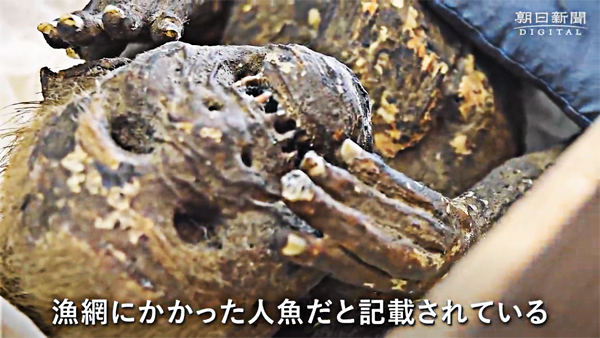
A new analysis of a mummified “mermaid” found in a Japanese temple has revealed exactly what it is made from, and it's not what scientists thought.
A centuries-old mummified “mermaid” that scientists recently revealed to be a gruesome doll of animal parts is even weirder than previously thought, new findings show.
In 2022, researchers discovered the mermaid, which is around 12 inches (30.5 centimeters) long, lying inside a sealed wooden box within a Japanese temple, located in Okayama Prefecture. At the time, researchers thought it was made from the torso and head of a monkey sewed onto a decapitated fish's body.
The haunting hybrid, which resembles a Ningyo from Japanese mythology - a fish-like creature with a human head that is fabled to help cure disease and increase longevity - had previously been displayed in a glass case at the temple for people to worship, before being stored away more than 40 years ago. A letter inside the mummy's box claims that the specimen was caught by a fisher sometime between 1736 and 1741, but it was likely created decades after that as a hoax to sell to affluent people wanting to improve their health or live longer lives.
Researchers from the Kurashiki University of Science and the Arts (KUSA) in Japan took possession of the mermaid in early February 2022 (with permission from the temple's priests) and began studying the eerie artifact using a range of techniques including X-ray and CT (computerized tomography) scanning, radiocarbon dating, electron microscopy and DNA analysis.

On February 7, the team finally released its findings in a KUSA statement (translated from Japanese). And what they found out about the mermaid was even more bizarre than expected.
The results showed that the mermaid's torso did not belong to a monkey but instead was made predominantly from cloth, paper and cotton that was held together by metal pins running from the neck to lower back. It had also been painted with a paste made from a mix of sand and charcoal.
However, the torso was covered in components stripped from other animals. Mammal hair and fish skin, likely from a pufferfish, covered parts of the arms, shoulders, neck and cheeks. The mermaid's jaw and teeth were also likely taken from a predatory fish, and its claws were made from keratin, meaning they likely came from a real but unidentifiable animal.

The lower half of the mermaid did come from a fish, likely a species of croaker — a ray-finned fish that makes a croaking sound with its swim bladder, which helps it control its buoyancy.
The researchers were not able to identify any complete DNA from the mermaid, but radiocarbon dating of the scales indicated they could date back as far as the early 1800s.
The new analysis suggests that the mermaid was most likely created to trick people into believing that Ningyos and their supposed healing abilities were real, researchers wrote. However, it also shows that the tricksters behind the creation also put much more effort into stitching together the counterfeit creature than expected.
There are 14 other “mermaids” that have been found in Japan, and the team now hopes to analyze others for comparison.
Related: Haunting images of “zombie” shark and other decaying aquarium animals revealed in eerie footage
Signs of cancer found in mysterious “pregnant” Egyptian mummy
Tubby “mermaids” vanished from Chinese waters 2 decades ago, now declared extinct
Mummified mystery pup that died 18,000 years ago was a wolf
Live Science (02/26/2023) 


SONG FACTS

“I'm A Man”  - Steve Winwood
- Steve Winwood
Album: The Best of the Spencer Davis Group
Released 1967 
“I'm A Man”  was the final Spencer Davis Group release to feature Steve Winwood, who left to form Traffic. It was originally written for a documentary called Swinging London, but the band liked it so much they saved it for a single.
was the final Spencer Davis Group release to feature Steve Winwood, who left to form Traffic. It was originally written for a documentary called Swinging London, but the band liked it so much they saved it for a single.
This is a different song from Bo Diddley's R&B
classic number of the same name  , which was later an
American Top 20 hit
, which was later an
American Top 20 hit  for The Yardbirds.
for The Yardbirds.
The song returned to the UK Top 75 in 2008 thanks to a
British television advert for the Volkswagen Polo  which featured a dog singing enthusiastically to the track.
which featured a dog singing enthusiastically to the track.
“I'm A Man”  has been a hit for three different acts, the Spencer Davis Group original being followed by Chicago's
7 minutes, 40 seconds version
has been a hit for three different acts, the Spencer Davis Group original being followed by Chicago's
7 minutes, 40 seconds version  recorded for their 1969 debut album,
The Chicago Transit Authority. Released as a single it reached #8 in the UK in 1970. In the U.S. it was originally released as the B-side to a re-release of “Questions 67 and 68”. Radio stations ended up playing both sides, and it eventually peaked at #49 in 1971.
Its last chart appearance came in 1989 when the Italian studio outfit Clubhouse
turned it into a medley
recorded for their 1969 debut album,
The Chicago Transit Authority. Released as a single it reached #8 in the UK in 1970. In the U.S. it was originally released as the B-side to a re-release of “Questions 67 and 68”. Radio stations ended up playing both sides, and it eventually peaked at #49 in 1971.
Its last chart appearance came in 1989 when the Italian studio outfit Clubhouse
turned it into a medley  with “Yé ké yé ké”, which limped to #69.
with “Yé ké yé ké”, which limped to #69.
In a 2003 interview with the Dutch music series Top 2000 agogo, Winwood spoke about how this tune laid the groundwork for his subsequent band, Traffic.
“We were kind of experimenting with what is now called world music - it didn't exist then - but Afro-Caribbean music which we'd been listening to”, he explained.
“‘I'm A Man’ was actually significant because it was the last Spencer Davis Group song before Traffic. So it was a significant transition because we were using these Afro-Caribbean elements in that music and then we went on in Traffic to combine that with many more elements like folk music and jazz and rock to try and combine all these elements.”
Winwood shares songwriting credit with the album's producer, Jimmy Miller. Spencer Davis told Musician Magazine in 1988 how the song came together:
“Lyrically, ‘I'm A Man’ was the brainchild of New York producer Jimmy Miller, who had a feel for the American market... and Jimi Hendrix showed me the E-7th guitar chord on the track. Steve provided the rest of the American R&B edge with his marvelous vocals and keyboards.”
Keith Emerson, keyboardist of The Nice and Emerson, Lake & Palmer, recorded a
disco version for the 1981 action thriller Nighthawks  ,
starring Sylvester Stallone and Billy Dee Williams. It's used in a key scene whre Stallone's character recognizes a terrorist at a disco club. Many of the DVD releases, however, use different music for the scene.
,
starring Sylvester Stallone and Billy Dee Williams. It's used in a key scene whre Stallone's character recognizes a terrorist at a disco club. Many of the DVD releases, however, use different music for the scene.
This was also used in these TV series:
The Umbrella Academy (Season 2, Episode 2 - 2020)
High & Dry (“The Trial” - 2018)
Mad Men (“Time Zones” - 2014)
Moonlighting (“Tale In Two Cities” - 1987)
And in these movies:
Minions (2015)
Pawn Sacrifice (2014)
Excuse Me For A Living (2012)
Chicago performed their version on Saturday Night Live on
November 3, 1979  .
.
Continued ...
MORE SONGS

1966
“Gimme Some Lovin'”  Live
Live  Video
Video 
“Keep on Running”  Live
Live  Video
Video 
1967
“I'm a Man”  Live
Live  Video
Video 
“I'm A Man” - Steve Winwood 1967 Continued ...
Steve Winwood official site (Steve Winwood Discography) / Rock & Roll Hall of Fame / Billboard / All Music / Song Facts /
Ultimate Classic Rock / Steve Winwood
Image: “ The Best of the Spencer Davis Group (album)” by Steve Winwood
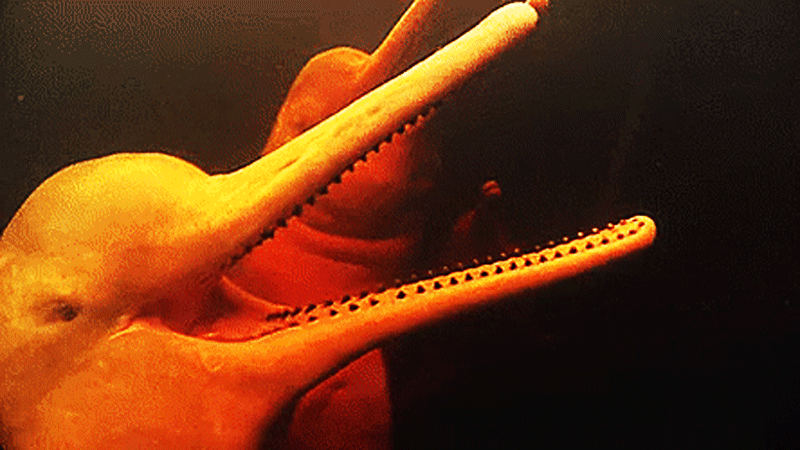
Trivia
● By what other name are pink dolphins known?
Answer to Trivia
READ MORE: U.S. Whales.org
● Who has been called the father of electricity?
Answer to Trivia
READ MORE: Famous scientists.org
s
● How long can a snail sleep?
Answer to Trivia
READ MORE: Sleep Adisor.org
● According to the Bible, what is now guarded by an angel holding a flaming sword?
Answer to Trivia
READ MORE: Bible Hub

A Test for People Who Know Everything
From the Jeopardy Archives Category - “DREAM BOATS” (Alex: We'll give you the ship; you give us the literary work it appears in.) ($200)
“The Orca, from this 1974 book.”
Answer to Jeopardy READ MORE: Penguin Random House
From the Jeopardy Archives Category - “DREAM BOATS” ($400)
“The Revenge, captained by the Dread Pirate Roberts.”
Answer to Jeopardy READ MORE: Fandom
From the Jeopardy Archives Category - “DREAM BOATS” ($600)
“The Hispaniola, searching for booty.”
Answer to Jeopardy READ MORE: Restoration Christian Culture.org
From the Jeopardy Archives Category - “DREAM BOATS” ($800)
“The Astraea, a Roman slave galley from an 1880 novel.”
Answer to Jeopardy READ MORE: Wikipedia.org/
From the Jeopardy Archives Category - “DREAM BOATS” ($1,000)
“The Nellie, a ship on the Thames upon which Marlow tells a tale featuring another ship.”
Answer to Jeopardy READ MORE: Grade Saver

Joke of the Day

“A Turkey Was Chatting With A Bull”
A turkey was chatting with a bull. “I would love to be able to get to the top of that tree”, sighed the turkey -
“But I haven’t got the energy.”
“Well, why don’t you nibble on some of my droppings?” replied the bull.
“They’re packed with nutrients.”
The turkey pecked at a lump of dung and found that it actually gave him enough strength to reach the first branch of the tree.
The next day, after eating some more dung, he reached the second branch.
Finally after a fortnight, there he was proudly perched at the top of the tree.
Soon he was promptly spotted by a farmer, who shot the turkey out of the tree.
Moral of the story:
Bullshit might get you to the top, but it won’t keep you there.
Management Lesson: Reddit































